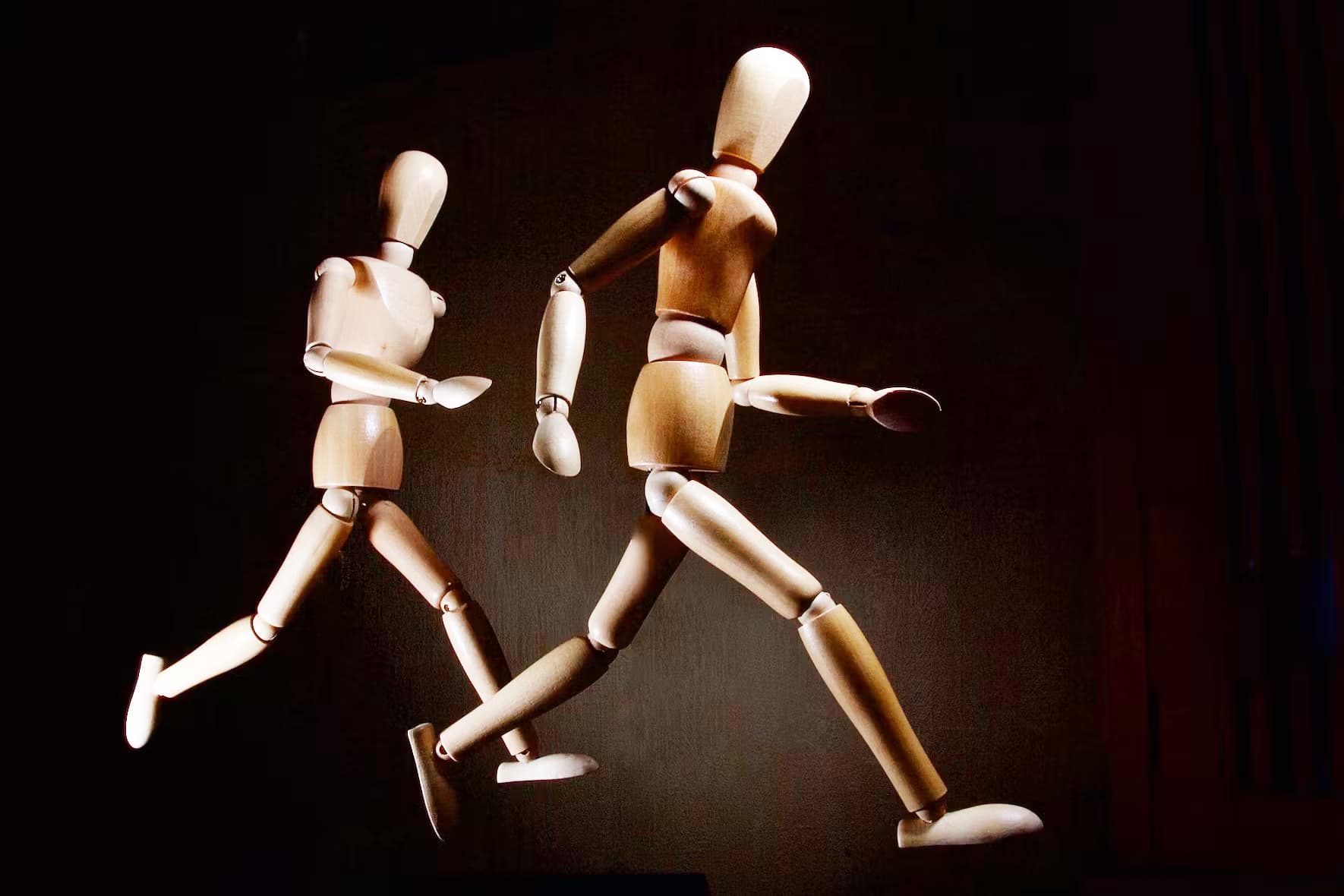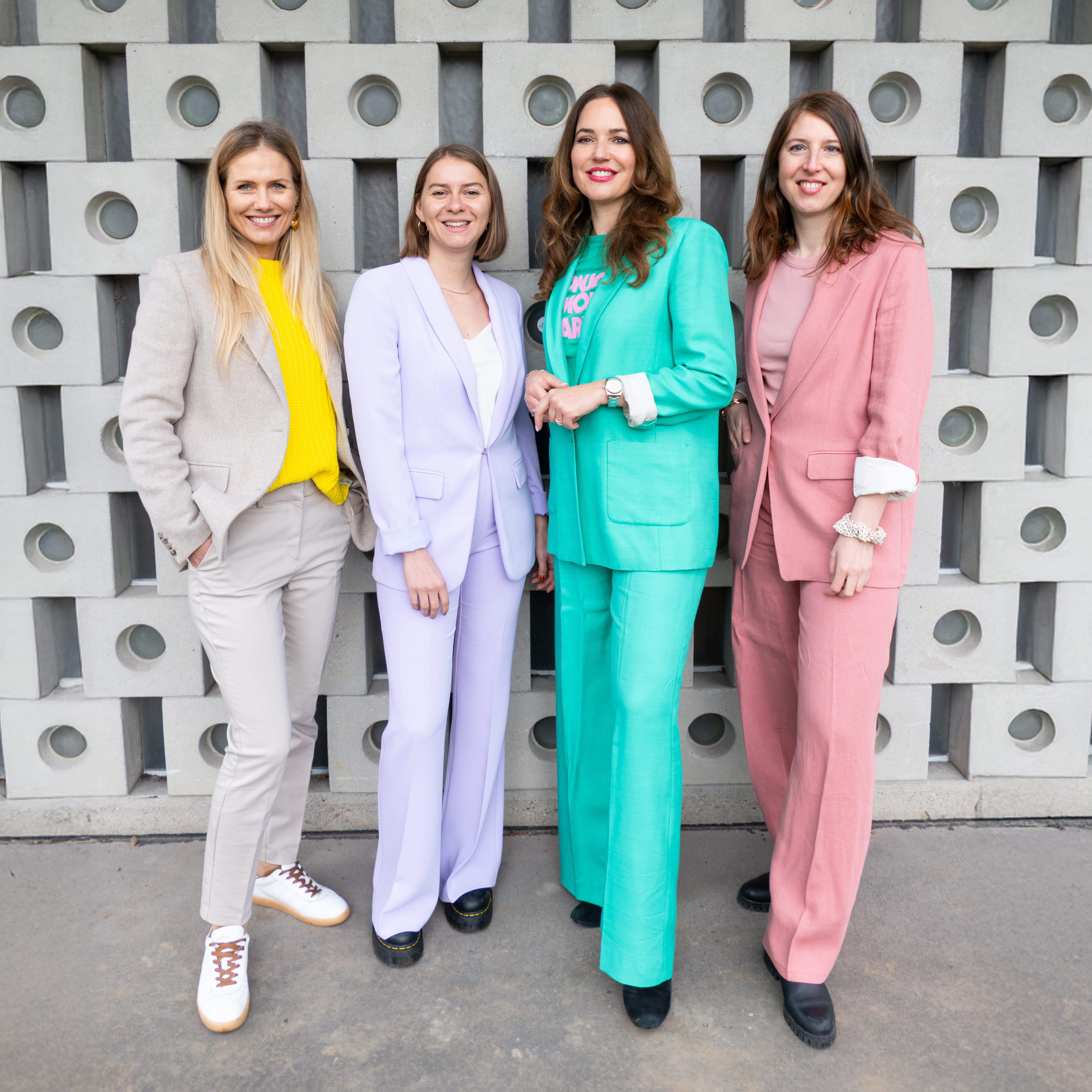German journalist and author Rebekka Endler didn't actually want to write a book about what objects are designed exclusively for men and how women's lives are affected by them. Until an old woman in Pompei beat her up with a mop and called her a "puttana". Because she didn't want to join the long queue for the women's toilet and therefore had to pee in the men's room. The author couldn't let go of the toilet issue. Understandably so, because public toilets say more about relations between the sexes than one might think at first glance: Changing tables, for example, are often set up in toilets for women, while there are usually none in those for men. And that's despite the fact that more and more dads are traveling alone with their children. And anyone who spends a lot of time at festivals will probably have come across "pee aids": A kind of folded funnel that allows people without penises to urinate while standing up. So instead of more unisex toilets being built, women are apparently supposed to adapt to men's bodies.
Our daily live is not designed for women
After her own bathroom experience, Endler began researching and quickly discovered: the world is designed by men for men. In her book "The Patriarchy of Things," she points out various examples. One encounters it in virtually all areas of life: Some video tools overhear women's voices. On Instagram, female nipples are censored with few exceptions, but those of men are okay in any case. Even when it comes to comfortable temperatures for working, there are differences between the sexes: Women work more productively at around 25 degrees, men at 22, but the standard tables for climate planners assume the average man. Standard piano keys are easier for men to use because they have a larger hand span. Many smartphones are too big for women's hands, and the pockets of women's pants are too small to really carry anything in them.
Who is actually considered the norm? Sure: the man!
But the question of who our world is designed for is about more than pants pockets, says Endler: "The objects that surround us tell us a lot about social constructs and power relations." One example is electrical appliances. When marketed to women, they are often smaller, lighter and have fewer buttons, the journalist describes in her book. She calls this phenomenon "pink it, shrink it." And what's more, products for women are often presented as a deviation from the "normal" version. In 2004, Swedish product designer Karin Ehrenberger used a simple experiment to show how much this supposed deviation from the norm has to do with gender. Ehrenberger designed a hand blender in matte olive green and black. It had orange buttons, 27 speeds, countless attachments, an LED display and was called "Mega Hurricane." Alongside it, she designed a light blue and white drill that was shaped like a dolphin. It had a single switch, three functions and was called "Dolphia" - the name emblazoned in playful lettering on the side of the product.
Ehrenberger showed the two devices to a group of test subjects and wanted to know what characteristics they associated with the appearance of the devices. The verdict was scathing: the vast majority of women and men found the drill inferior and "weak". This must be a device for women, according to the tenor of the respondents; although this was not specifically asked about. The hand blender, on the other hand, was not explicitly assigned to men by most of the test subjects, but they did say they found it "powerful" and "professional". The experiment thus shows: The norm is apparently strong and qualified - and above all it is male.
Design that is unfriendly to women can be life-threatening
The fact that research and development neglect women can, in the worst case, even be life-threatening. One of the best-known examples is the dummies used in crash tests for new cars: The standard dummy was developed in the 1970s; it is 175 centimeters tall, 78 kilograms heavy, with average male body mass. However, factors such as height and weight have an impact on how badly one is injured in a car crash. To date, however, crash tests with different dummies are not a legal requirement, but merely a recommendation. That's why women are 47 percent more likely to be seriously injured in a traffic accident than men, Endler writes. The risk of being slightly injured is even a full 71 percent higher for women.
Even at work, Endler finds examples of items that weren't thought out for women: Stab vests and bulletproof vests for women smaller than the average man hardly exist. A particularly absurd example of the consequences: in 1999, a British policewoman underwent breast reduction surgery so she could wear her vest comfortably. Female police officers in other countries also struggle with inappropriate equipment: German female officers were not asked about their needs before their uniforms were introduced in 1982. That's why the notepads used by police initially didn't fit into the pockets of women's uniforms.
The situation is not much better in other professions. A 2014 study showed that Canadian female firefighters wear pants designed for men. But for women, these models are often too big and don't fit properly. As a result, they are less able to do their job - which saves lives after all! - less well than their colleagues and more likely to injure themselves in the process.
Nevertheless: Since then, more and more manufacturers have been producing workwear for women firefighters that is specifically tailored to their needs.
There would be another option: women show the way
So far, so patriarchal, our everyday design. However, slowly but surely, there are changes. And this is happening in one of the most male-dominated industries: soccer. Football shoes for women, Endler writes in her book, are not really shoes for women at all: They are small men's shoes or large children's shoes - often, of course, in pink or with playful patterns. But women's feet have very different requirements than wearing lovely colors: the female heel is narrower, while the forefoot is proportionally somewhat wider. The position of the knees and hips and the distribution of body weight are different in women than in men; as a result, the distribution of pressure on female feet differs.
So it's clear: women need their own models of football boots. British soccer player Laura Youngson also noticed this. In 2017, she organized a tournament on Mount Kilimanjaro with all-female teams, professionals and amateurs from all over the world. Between games, the women exchanged stories about their uncomfortable shoes. They complained that the men's shoes did not fit properly and that those for children were made of inferior material. Most of the female players, however, had simply gotten used to the blisters and abrasions on their feet. Youngson was shocked: "These women have been playing world championships in shoes that were not made for them!"
The British woman then collected her own data and found out: 75 percent of women playing soccer in amateur and professional sports wear children's or men's shoes. Together with her colleague Ben Sandhu, she therefore founded the company IDA Sport, the world's first soccer shoe manufacturer for women. Together with female players, Youngson developed a shoe that meets the wishes of the target group in terms of quality and appearance: a simple leather shoe that does without any flowers and is tailored to the female foot. The success proves Youngson right: In August, IDA Sports won the Sports and Fitness Industry Association (SFIA) Start-up Challenge.
Developed by women for women
Women are also driving change in other areas. There are more and more companies that develop products specifically for women's needs. And most of them are run by women. The Diva Cup menstrual cup, for example, was developed by a mother-daughter duo in 2003. Behind the dating app Bumble, where women make the first move, is also a female founder, Whitney Wolfe Herde. Incidentally, she launched the platform in 2014 after leaving her employer Tinder and suing for sexual harassment. Dipsea, a library of read-aloud erotic short stories, is another app by women for women. Co-founders Gina Gutierrez and Faye Keegan developed the app because they realized: Unlike men, women don't respond primarily to visual stimuli during sex and masturbation, but to stories that get their mental cinema going.
However, business ideas from women often still receive less funding than those from men, as various studies repeatedly prove. This is despite the fact that female-led startups generate 78 cents in revenue for every dollar invested in them - men, by contrast, only 31 cents. Women aren't giving up, however; on the contrary. The number of female-led startups is increasing year after year, including in Switzerland: Innosuisse, the Swiss government's agency for innovation promotion, recorded a 46 percent share of women in its 2021 startup trainings, with around 5,500 participants. In 2020, the figure was 43 percent, and even lower before that.
Meanwhile, Rebekka Endler is working on her new book about the mechanisms of patriarchy's impact on people and politics. For her, it is clear that many developments are only just beginning. More women are needed in research, development, design - in fact, everywhere: "We need to get away from male-dominated navel-gazing - toward a world that revolves around all of us."


.jpg-.jpg)



